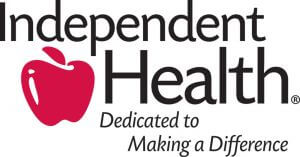Navigating the Road Ahead: The BNP Transportation & Logistics Industry Leaders Forum
Blog Categories
March 21, 2023
Exploring the Need for Regional Transportation Network Improvements & Advancements in Global Logistics
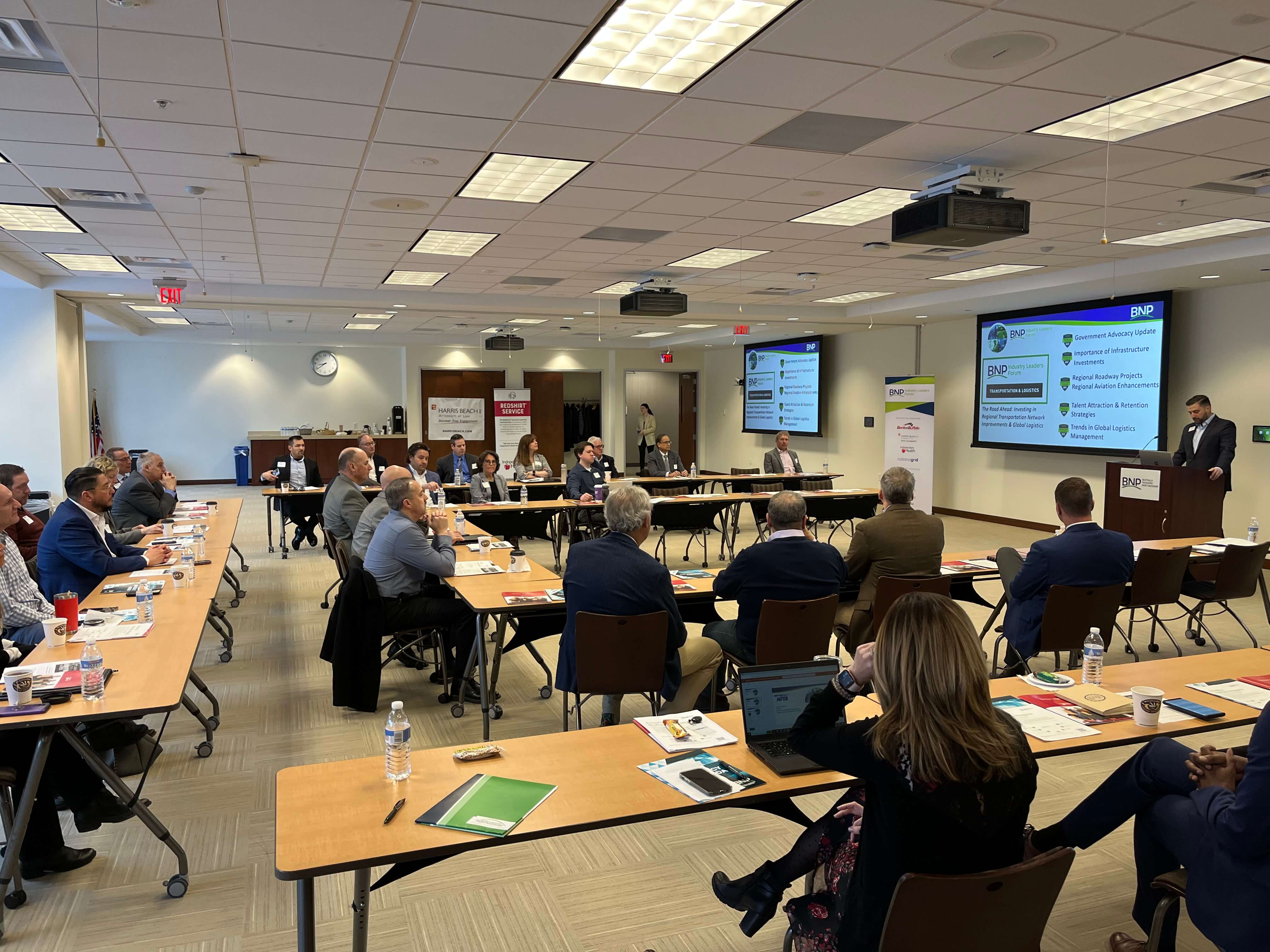
Buffalo Niagara is located within 500 miles of 40 percent of the continental North American population. As each economic sector strives for innovation, the roadways and airways that connect customers to products/services are critically important. At the same time, significant investments are needed to ensure reliable shipping and travel in our region.
Keeping the Economy Moving
Now more than ever, the strength of our multi-modal transportation network will impact the international supply chain’s future success. The March 16 Transportation & Logistics Industry Leaders Forum (ILF) gathered a cross-section of companies to discuss both the investments necessary to keep our economy moving and the importance of connecting local companies with global logistics trends.
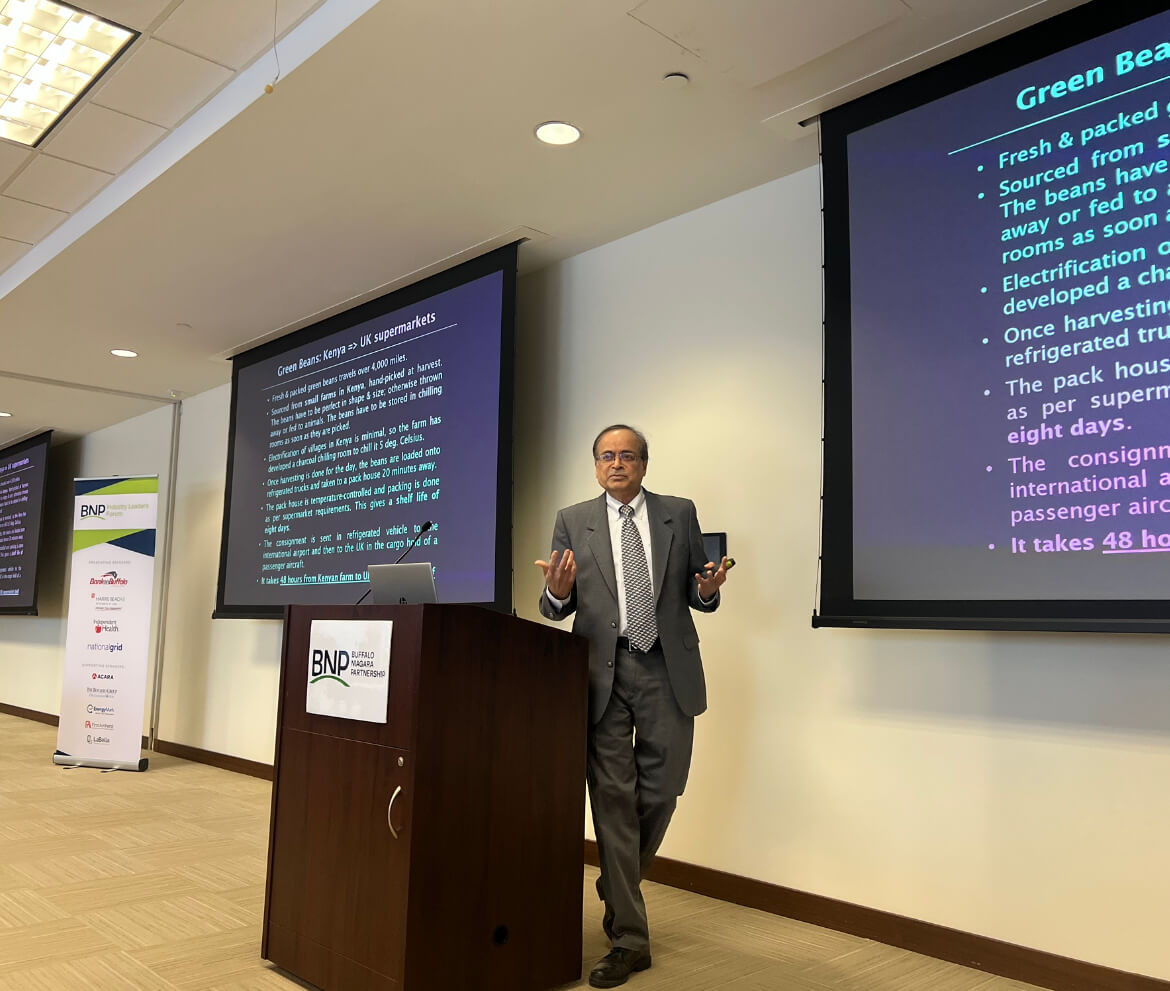
Joined by Transportation & Logistics ILF Strategic Partner the University at Buffalo’s Center of Excellence in Materials, the meeting included timely conversations led by our guests:
- Gary Hill | President | Union Concrete Corp. | Member of FAIR Committee
- Michael Finn | Executive Director | Greater Buffalo-Niagara Regional Transportation Council
- Dr. Nallan Suresh | Distinguished Professor of Operations, Management & Strategy | University at Buffalo School of Management
- Darren Kempner | Director, Government Relations & Development | Niagara Frontier Transportation Authority
- Rob Leteste | Business Intelligence & Workforce Manager | Invest Buffalo Niagara
The conversation ranged from advocacy for specific regional roadway projects and a fair share of New York State Department of Transportation funding, to the importance of greater logistical integration with Canada. The BNP looks forward to continuing these conversations with ILF members throughout the year.
The Realities of Workforce Attraction & Retention
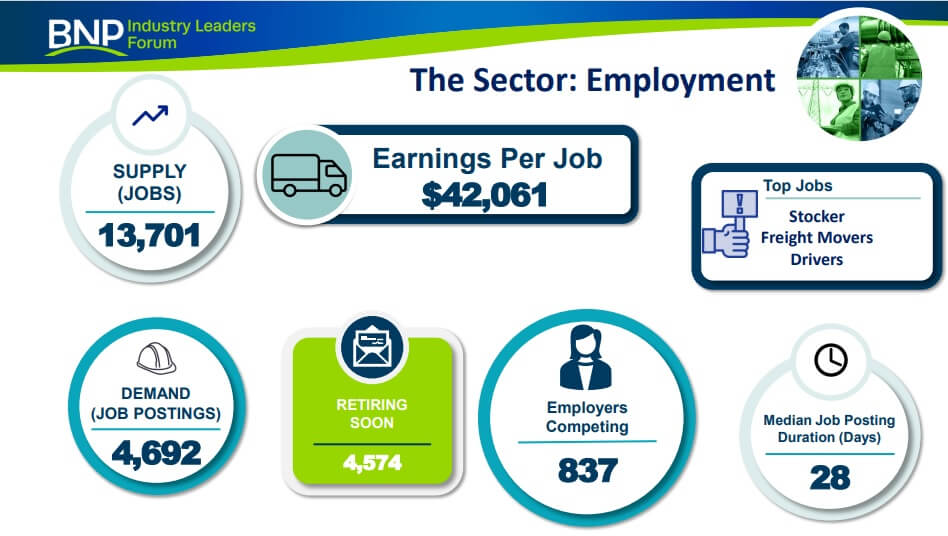
According to Lightcast data provided by Invest Buffalo Niagara, upcoming retirements and the length of open job postings within our region’s transportation and logistics sector are higher than the national average. While overall unemployment rates continue to decrease, this sector still faces serious talent attraction and retention needs that will increase in the near future.
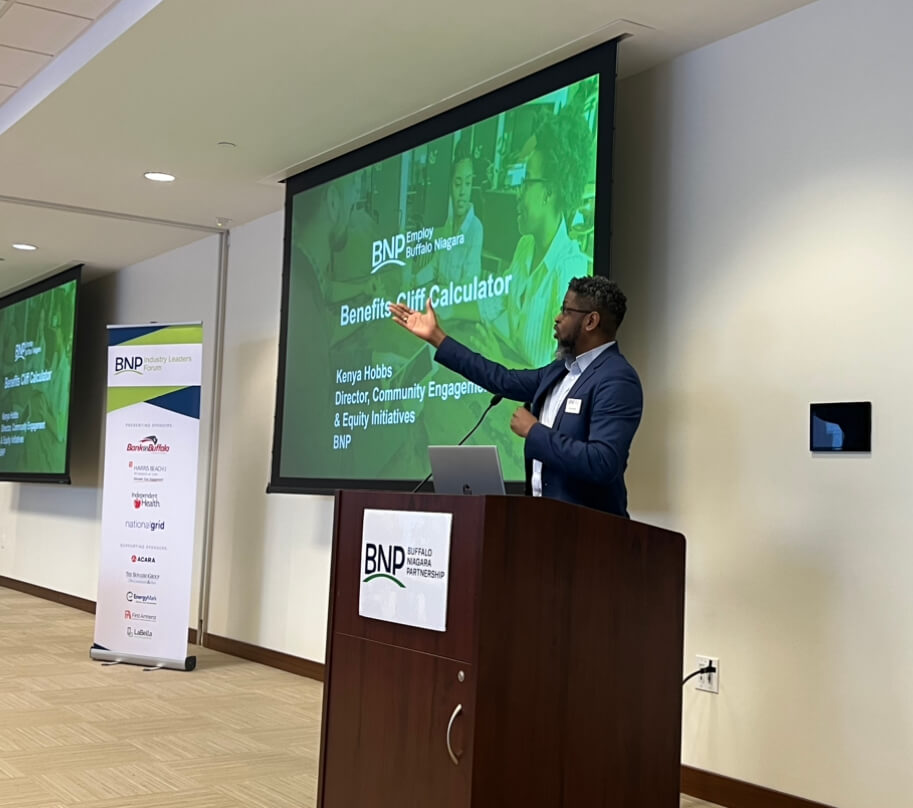
Kenya Hobbs, BNP’s new Director of Community Engagement and Equity Initiatives and Kristine Bieniek, Manager of Government Affairs and Workforce Development, provided ILF members Employ Buffalo Niagara tools designed to build talent pipelines for employers and career pathways for job seekers.
Employ Buffalo Niagara offers multiple workforce development programs. In different ways, these programs all work to create sustainable solutions for barriers to employment, upskilling low-wage earners and preparing job seekers to meet companies’ evolving expectations.
Learn more:
Learn more about the new BNP Industry Leaders Forum here.
Related Posts
ILF Spotlight: BankOnBuffalo Is Buffalo’s Bank
BankOnBuffalo is a presenting sponsor of the BNP Industry Leaders Forum, convening regional business leaders with their peers to strategize for the future success of their industry and the overall economic vitality of the regional economy.
Trends & Regulations: Preparing for a New future for Finance & Insurance Companies
How will government regulations and evolving consumer trends change how Buffalo Niagara companies are financed and insured?
The BNP Finance & Insurance Industry Leaders Forum (ILF) came together on October 5th to discuss this complicated question.
Preparation & Capacity: BNP Energy & Telecommunications Industry Leaders Forum
The BNP Energy & Telecommunications Industry Leaders Forum (ILF) came together on September 14 to discuss the future of the sector in the wake of evolving government regulations and consumer trends
Talent is Everything: The BNP Tech Industry Leaders Forum
Buffalo Niagara has approximately 12,900 tech jobs across 5,200 tech and tech enabled firms, according to extensive research by Tech Buffalo and the University at Buffalo Regional Institute. Between 2010 and 2019, tech jobs here grew at a rate of 4%, trailing our peer cities and the top ten national tech hubs.



